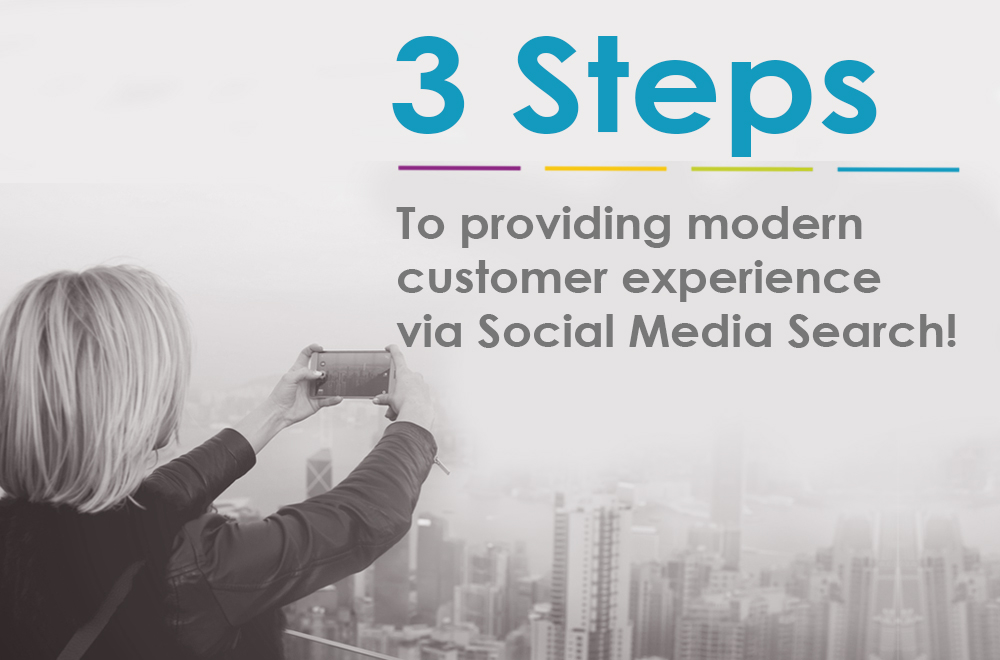3 steps to providing Modern Customer Experience via Social Media Search!
08 Jun 2016

Isn’t it amazing how much of an impact sharing a single piece of information can make to a customer? If somebody wakes up late for a flight they’re supposed to be catching, they face a mad scramble in an expensive taxi ride as they battle to make it through the boarding gate on time. The airline that can make the news that flights are subject to a three hour delay pop into that person’s social media newsfeed will save them that financial outlay and stress.
But how can brands get that all-important piece of information to customers in the right place, at the right time to provide modern customer service experience? Here are three steps to follow:
Identify where your customers will go
My experience reflected the fact that the days of search engines being the only way that people discover information are long gone. We’ve become social sharers, and the millennials in particular are increasingly searching for information in different places, including their favourite social media platforms. More than 88% of consumers are influenced by comments others make online, meaning content on social channels can make or break brands. Twitter & Instagram are great examples of people using social media as search engines to gather updates in real-time,keeping up with conversations and trends.
Keep up with what’s trending
This means brands should embrace customer feedback, sharing people’s comments on social sites if permitted to do so. The authenticity in their comments can add a credible element to an overarching brand message or campaign. They must also keep up to speed with the next generation of customer interaction, moving quickly to post relevant content using hashtags and other tags to ensure content is noticed by people searching for information on the topic. Where appropriate the brand can take control by creating a new hashtag: for example #Heathrowterminal5 could have been used by my airline, linking the airport and specific location of the affected area. The airline could then use this hashtag to post real-time updates to keep customers in the know. This hashtag can then be shared & reposted by customers affected by the same flight issue.
Follow your customer’s journey
Feedback and comments then need to be tracked and anticipated: put a plan in place to address negative feedback by intercepting certain hashtags and presenting a solution. Social media monitoring can provide a timeline of all activity associated with specific hashtags, so that all related posts can be addressed, preventing the nightmare scenario of somebody clicking on the hashtag and seeing a barrage of negative messages. For example, with social media community management, monitoring tools can be used to identify, track and report negative sentiment & turn detractors into promoters with positive customer engagement experience. A customer complaining about his bad test-drive experience with the hashtags #Vauxhall #Testdrive2016fail will be flagged up and responded to by the brand with the offer of a better test-drive experience.
Building a combination of timely informative updates, promotions (possibly platform-specific) and positive sentiments from existing customers will build the brand’s influence and popularity on social media, keeping existing customers engaged and driving new, curious people towards the brand.
Please login to comment.
Comments